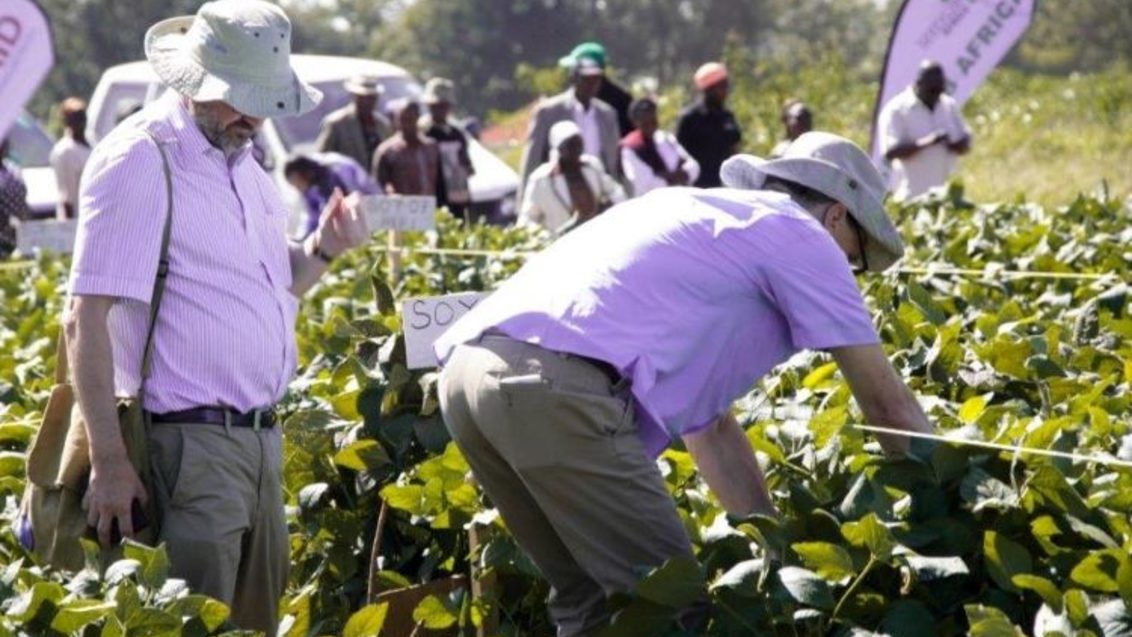How can breeders beat hunger better?

«Zero Hunger» is the United Nations’ SDG 2. Crop breeding will play a major role in achieving this Development Goal – especially if it improves. A new study points a way forward. What does the study propose, and in which international program? We asked Ian Barker*. He is one of the paper’s authors and a speaker at the recent webinar on this topic. (This link now leads to the event recording, chat transcript, etc.)
Syngenta Foundation: Your study relates to the CGIAR initiative «Crops to End Hunger» (CtEH). What’s the idea behind this program?
Ian Barker: CtEH will put new energy into breeding the staple crops that matter most to smallholders and poor consumers. The aim is to accelerate and modernize the development, delivery, and use of a stream of new varieties.
But isn’t that what CGIAR has been doing for all its 50 years?
Yes and no. There is absolutely no doubt that CGIAR breeding has boosted global food security. But farmers’ adoption of new varieties could always have been faster and has recently slowed. Hence the drive for acceleration. CtEH will speed up the breeding and the application of modern methods to raise productivity and help agriculture adapt to climate change. A major challenge is that farmers need crops bred for conditions today and tomorrow. But what are they using? Even so-called «newer» varieties were selected two decades ago.
So ending hunger is all about speeding up scientists?
There’s naturally more to it than that. Another challenge is that many new varieties don’t get used much. CtEH will therefore be putting considerable emphasis on adoption. That means ensuring that new varieties meet market needs, and that appropriate delivery mechanism are in place. The fastest and cleverest breeding in the world is only any use if it reaches farmers – including smallholders – and their customers.
CtEH is a major program. Who’s providing the money?
The funders include USAID, the Bill & Melinda Gates Foundation, the UK Department for International Development, Germany’s Ministry for Economic Cooperation and Development, and the Australian Centre for International Agricultural Research.
Turning to your White Paper: «Accelerating the delivery of quality seed from breeding investments made by the Crops to End Hunger initiative through economically sustainable seed systems» is quite a long title. What can readers expect to find there?
The White Paper looks at how OneCGIAR could optimize its approach. A particular aspect is a collaboration with national breeding programs and private companies. As well as greater success in developing and deploying varieties, this is also about strengthening countries’ local seed sectors.
So what are you recommending?
We suggest, for example, the creation of a single seed delivery unit for all of OneCGIAR. That would streamline varieties’ progress to commercialization. The task is large and has several dimensions, which the White Paper describes in detail. But it would bring considerable benefits.
Who is behind the White Paper?
The CtEH Seeds Delivery Group commissioned the study. Marianne Bänziger**, Richard Jones***, and I wrote the paper, with support from AGRA and the Syngenta Foundation. International consultation at the end of 2020 enabled numerous experts to contribute their views.
Who should read it?
Our initial target readers are the OneCGIAR reform design teams and their external advisors. But we hope that the paper will also guide other seed sector development initiatives and practitioners. It could, for example, help funders formulate their future program calls. In our consultation, representatives of national research organizations said the paper would also help guide their own reforms and program changes. Personally, I hope that everybody interested in the seed sector and the development of crop varieties will find it worth reading.
What dimensions did the international consultation add?
The experts made lots of suggestions. These include choosing network leaders with technical and partnership skills to head the process and giving local partners greater responsibility in breeding networks. The consultation also proposed focusing resources on fewer but better varieties at suitable intervals, doing more on-farm testing under real-life conditions, engaging commercial partners earlier and focusing on varieties for which farmers and the market are willing to pay.
Now you’ve published the White Paper, what happens next?
The study feeds into the new OneCGIAR science prospectus, due out in 2021. As I say, we hope that funders will use it from now on to shape their investments. We are also keen to keep the debate going around this topic more generally. The recent Agrilinks webinar was an important first step in that process.
Here are the paper and more info on CtEH.
*Ian Barker, former head of the Syngenta Foundation’s Seeds2B sub-portfolio, is Global Potato Agri-Food System Program Director at the International Potato Center (CIP).
**Marianne Bänziger is the former Deputy Director-General, Research & Partnerships at the International Maize and Wheat Improvement Center (CIMMYT).
***Richard Jones, also retired, worked in Africa for major organizations on agronomic research, technology exchange, and scaling up.
